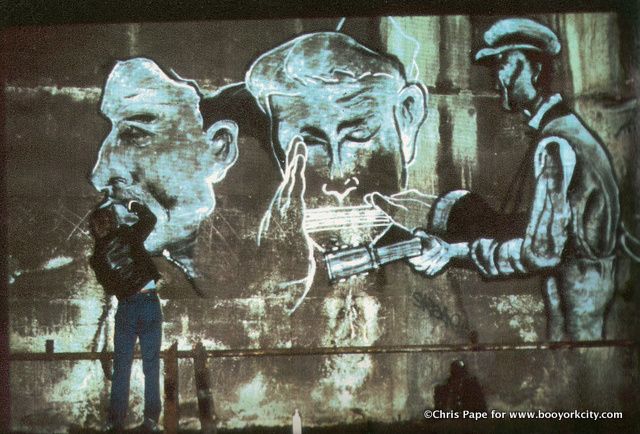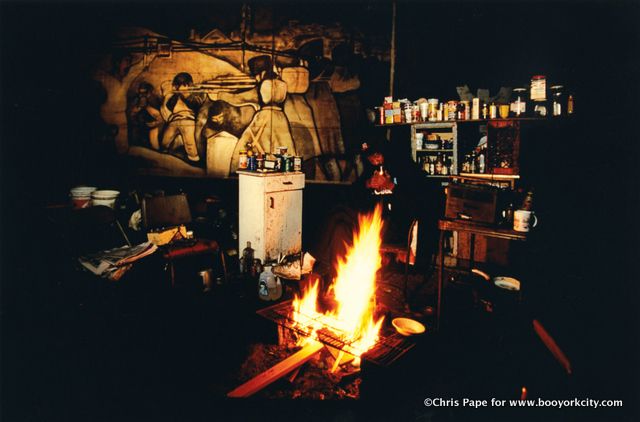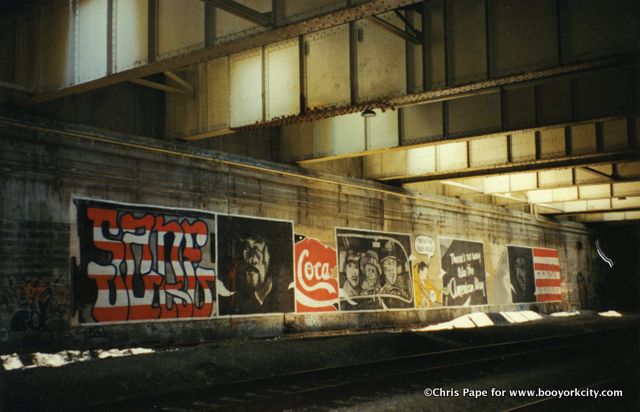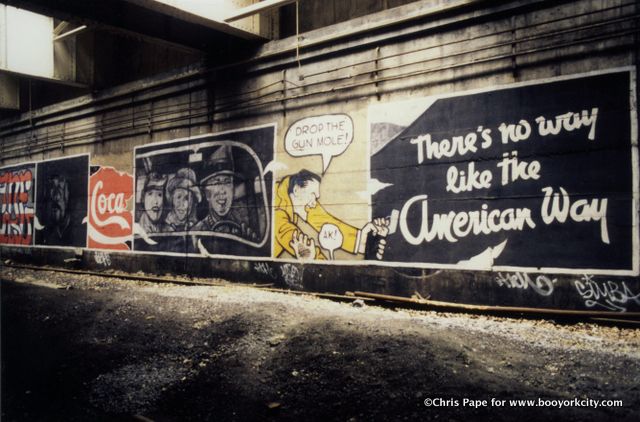A Salvaged Banksy Mural is Now on View in NYC
This unique Banksy mural goes up for auction on May 21st in NYC!


There is a dark, dank place underground, where art once flourished and where homeless people huddled beneath 20 foot high copies of works by Da Vinci, Goya and Michelangelo. Built under Riverside Park in the 1930s as a railroad for Amtrak, it was monopolized by street artists when it fell into disuse in 1980, then christened the Freedom Tunnel after its most prolific and talented artist, Chris ‘Freedom’ Pape, who discovered it in his teens.

Pape said: “There were graffiti writers in the tunnel before me, maybe five or six of them. My brother and I went down there in 1974, when I was 14, to practice tagging and ride the freight trains.
“I wasn’t scared because I was with my brother and our friends. But when I came back to the tunnel by myself in 1980 to paint for real, that was scary because I was by myself.”
Eventually Pape was joined in the tunnel by scores of homeless people, who created shantytowns below his paintings of Goya’s The Third of May, the Venus de Milo, Michelangelo’s David, and Salvador Dali’s The Persistence of Memory, among many others. These huge paintings were dramatically lit from above, as if in a gallery, by shafts of light streaming through the grates in the sidewalks of Riverside Park.
Father-of-two Pape, who now lives in Brooklyn, said: “I like galleries but I believe my art is more powerful in an environment like the tunnel. I replicated a lot of famous works because they were well known already and it gave the viewer one less barrier to hurdle.”

At its height, almost 100 people lived there, while Pape painted vast artworks around them. He said: “I had painted in the tunnel for six years before the homeless moved in, so they were curious about me. I became friendly with most of them and my visits to the tunnel were much safer and even relaxing.”
But in 1991, the tunnel—which runs from 72nd to 120th Street—was reopened for trains and a mass eviction followed. The shantytowns were bulldozed and the tunnel was chained off.
Four years after the evictions, Pape completed his final work in the tunnel; a comic book-style mural, called Buy American, which commemorated the homeless and referenced their relationship with the city and the police.
This striking image became such a draw for urban explorers that in 2009 Amtrak painted over it, and many other murals, to dissuade trespassers from entering the Freedom Tunnel.

But Pape’s work can’t be so easily forgotten. Recently, an artist named Gaia incorporated a portrait of the tunnel’s architect, Robert Moses, with the last visible remains of Buy American, giving it a new life.
Pape said: “I’m not sad the works were painted over, street art is truly an ephemeral form of expression. I’ve been very lucky—there are still about five of my paintings left down there, including my self-portrait from 1984.
“I’ve only been back a few times since I painted Buy American. After that, it took me a while to transfer my work to canvas. It was about five years before I was satisfied with my art. Then I began showing publicly again.”

As well as gallery shows, Pape has also written several books, including the biography of a New York street art legend. Blade: King of Graffiti is the result of a year and a half of interviews with the artist and other key figures, and was released on April 28.
And even though he no longer paints in the tunnel that bears his name, Pape is still creating works of art in dark, secret places.
He said: “A few years ago I discovered a new tunnel in Rochester that I’ve been painting in, but I only do the exploration part so I can paint. You can ask my wife—I’m a big chicken.”
Mathew Ramirez Warren’s eight-minute documentary on Pape, Where is Art?, which sees him return to the Freedom Tunnel to view the remains of his paintings.
Read the full story and see more photos on Boo York City and get in touch with the author at @booyorkbooyork.
Subscribe to our newsletter